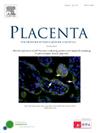Anti-β2GPI antibodies induce trophoblast pyroptosis and placental inflammation through TLR4/NLRP3/GSDMD axis
IF 2.5
2区 医学
Q2 DEVELOPMENTAL BIOLOGY
引用次数: 0
Abstract
Objective
Obstetric antiphospholipid syndrome (OAPS) is an autoimmune disease characterized by the persistent presence of anti-β2-glycoprotein I (anti-β2GPI) antibodies. Placental inflammation, particularly involving trophoblasts, is currently considered a key driver of OAPS pathogenesis. This article aims to explore the effect of anti-β2GPI antibodies on trophoblast pyroptosis and the underlying molecular mechanisms.
Methods
Firstly, we collect clinical samples to test pyroptosis-related expression. Then, we assess the effects of anti-β2GPI antibodies on the biological function of trophoblast by CCK8, EDU, transwell assays and so on. Meanwhile, we detected pyroptosis-related factors by WB and qPT-PCR. In vivo experiments, we establish OAPS mouse model to study trophoblast pyroapoptosis.
Results
We demonstrated that the placentas from OAPS patients exhibited distinctive histopathological alterations and elevated expression of pyroptosis-related markers. In vitro assays, we found that anti-β2GPI antibodies could impair trophoblast biological functions and upregulate trophoblast pyroptosis, an effect that could be reversed by the NLRP3 inhibitor MCC950. Furthermore, anti-β2GPI antibodies could activate the TLR4/NLRP3/GSDMD pathway, leading to trophoblast pyroptosis. Meanwhile, the TLR4 inhibitor Robinin downregulated the expression of pyroptosis-related factors and restored trophoblast biological function. Moreover, OAPS mouse models were successfully established to confirm the excessive activation of the TLR4/NLRP3/GSDMD pathway-mediated pyroptosis in vivo.
Conclusion
Anti-β2GPI antibodies could exacerbate trophoblast pyroptosis via the TLR4/NLRP3/GSDMD axis.
抗β 2gpi抗体通过TLR4/NLRP3/GSDMD轴诱导滋养细胞焦亡和胎盘炎症
目的产科抗磷脂综合征(OAPS)是一种以抗β2-糖蛋白I(抗β 2gpi)抗体持续存在为特征的自身免疫性疾病。胎盘炎症,特别是涉及滋养细胞,目前被认为是OAPS发病的关键驱动因素。本文旨在探讨抗β 2gpi抗体对滋养细胞焦亡的影响及其分子机制。方法首先采集临床标本,检测热休克相关表达。然后,我们通过CCK8、EDU、transwell等方法评估抗β 2gpi抗体对滋养细胞生物学功能的影响。同时,我们通过WB和qPT-PCR检测了与焦热相关的因子。在体内实验中,我们建立OAPS小鼠模型,研究滋养细胞焦细胞凋亡。结果OAPS患者的胎盘表现出明显的组织病理学改变和焦热相关标志物的表达升高。在体外实验中,我们发现抗β 2gpi抗体会损害滋养层细胞的生物学功能,并上调滋养层细胞的焦亡,而这种作用可以被NLRP3抑制剂MCC950逆转。此外,抗β 2gpi抗体可激活TLR4/NLRP3/GSDMD通路,导致滋养细胞焦亡。同时,TLR4抑制剂Robinin下调热作用相关因子的表达,恢复滋养细胞生物学功能。此外,我们成功建立了OAPS小鼠模型,证实了TLR4/NLRP3/GSDMD途径介导的体内焦亡的过度激活。结论抗β 2gpi抗体可通过TLR4/NLRP3/GSDMD轴加重滋养细胞焦亡。
本文章由计算机程序翻译,如有差异,请以英文原文为准。
求助全文
约1分钟内获得全文
求助全文
来源期刊

Placenta
医学-发育生物学
CiteScore
6.30
自引率
10.50%
发文量
391
审稿时长
78 days
期刊介绍:
Placenta publishes high-quality original articles and invited topical reviews on all aspects of human and animal placentation, and the interactions between the mother, the placenta and fetal development. Topics covered include evolution, development, genetics and epigenetics, stem cells, metabolism, transport, immunology, pathology, pharmacology, cell and molecular biology, and developmental programming. The Editors welcome studies on implantation and the endometrium, comparative placentation, the uterine and umbilical circulations, the relationship between fetal and placental development, clinical aspects of altered placental development or function, the placental membranes, the influence of paternal factors on placental development or function, and the assessment of biomarkers of placental disorders.
 求助内容:
求助内容: 应助结果提醒方式:
应助结果提醒方式:


